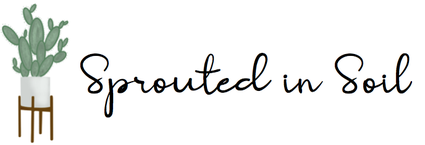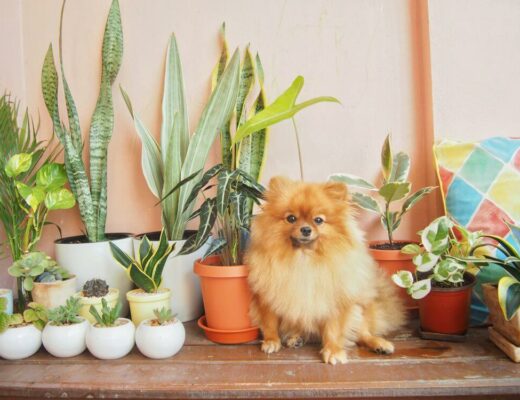When it comes to watering succulents without drainage, there’s a common trap that owners fall into.
Any succulent or cactus enthusiast (well, any plant enthusiast, really) will tell you that picking out that perfect pot is almost as enjoyable as finding THE succulent that you just must add to your windowsill!
I usually spend just as long worrying about what pot looks best with my new succulent as I do narrowing down the number of succulents I should buy during a plant spree. There is so much upon which to decide: color, shape, size, texture, material, hanging, see-through, shiny, matte…you get the jist!

But then things can get a bit tricky.
After finding your succulent and the most exquisite pot you can imagine, you realize there’s no drainage hole. Ideally, finding a pot with a drainage hole will give you the best outcome with the least amount of work. You could also drill a drainage hole into the bottom of your new pot, but then you risk creating a crack.
So are you stuck?
Nope! Keep reading this guide to find out how to water succulents in containers without drainage! It might take a bit more work, but it’s totally worth it.
Table of contents
Do succulents need drainage?
The most straightforward answer is yes, succulents need drainage. Remember, succulents are plants that live in dry, arid climates. They have evolved to have the ability to thrive in places where most other plants cannot. A succulent’s thick, plump leaves retain water, allowing it to grow in parts of the world that receive little rain and have minimal water in the soil.
Knowing where succulents are found in nature is important to understanding that good drainage is necessary to keep your succulent happy. Because succulent leaves collect and retain water so well, overwatering will cause the plant’s cells to burst and die. Another reason that overwatering is bad for succulents is that excess water takes up all the extra space in the soil that usually holds oxygen molecules (used by roots!).

Adequate drainage, therefore, allows us to artificially create conditions that mimic a succulent’s natural habitat. The easiest way to facilitate drainage is via a drainage hole. This allows excess water to flow out of the pot instead of pooling at the bottom which creates a boggy, inhospitable environment for the succulent.
So can succulents be grown in pots without drainage holes?
Yup, you bet. It takes some careful planning, a few extra steps, basic knowledge about succulent care, a mindful hand and self control but succulents can absolutely be grown in pots without drainage holes.
About ⅓ of my pots lack drainage holes. When I first began buying succulents and cacti, I did not heed any of the “rules of thumb”. Through trial and error (and finally doing my research) I have figured out how to keep my succulents looking beautiful and healthy even when they are planted in containers without drainage holes.
So let’s get on to what you really came here for…the “how to”!
How to plant succulents in pots without drainage holes.
One of the most crucial factors when planting a succulent in a container without a drainage hole is the soil composition. This is important when planting all succulents and cacti but even more so in this situation as we want the soil to retain as little excess water as possible.
The absolute best soil in which to plant succulents is one that is gritty and light. The ratio of organic materials (like dirt) to minerals (like gravel, pumice, pearlite) is the determining factor in how well your soil will drain excess water.
I usually suggest a ratio of ⅓ organic material to ⅔ coarse mineral when planting succulents in pots with drainage holes. However, use the following ratio for a pot without drainage:
- ¼ organic material
- ¾ mineral material (picking a particle that is approximately ¼ inch in diameter)

Some people suggest a layering approach (large pebbles on the bottom of the pot, topped with succulent soil), however I find that this actually does not work! Doing this technique actually causes water to pool at the bottom because there is nothing to soak up the water. Instead, making sure the soil is mixed evenly with the ¼ inch mineral particles will work much better and prevent water accumulation.
When you are ready to pot your succulent, loosely fill the container approximately halfway up or until the base of the plant sits just below the lip of the pot. Place the plant on top of the soil and fill in the gaps between the succulent and the pot. Be mindful not to pack in or tightly compress the soil mixture around the roots.
Finally…how to water succulents in containers without a drainage hole
A measuring device is your best friend! So is knowing the amount of soil your container can hold. Knowing these two things will make watering a whole lot easier!
I like to be more on the conservative side when it comes to the amount of water I give my succulents potted in containers without drainage holes. Use ⅓ of the amount of water as there is soil. For example, if a pot is filled with 3 cups of soil, I will only give it 1 cup of water.

Using this technique will significantly help prevent you from overwatering your succulents! Once you have watered your succulent in a pot without drainage, let it be! The frequency of watering depends on the climate, air flow, type of succulent, material of the pot and amount of sunlight.
Because each of these can vary greatly from plant home to plant home, consider this step-by-step trick about a week and a half after you have watered your succulent.
- Stick a clean, dry chopstick straight into the soil between the pot’s edge and the succulent.
- Gently push the chopstick to the bottom of the pot and let it sit for 10 seconds.
- Slowly pull the chopstick out of the soil. If there are wet clumps of soil still stuck to the chopstick, don’t water! Wait another 3-5 days and repeat. If it has minimal damp to dry soil, go ahead and water!
If this technique is too subjective for you, you can also buy a moisture meter. I personally like the XLUX Moisture Meter.

To use, make sure the probe is clean before inserting it deep into the soil. For most accurate measurements, I leave my moisture meter in the soil for 3 minutes, or until the dial has stabilized. What I like about this particular one is that it has 10 readings broken into 3 categories; dry, moist and wet. For succulents in containers without drainage holes, I only water when the arrow is in the “dry” range!
Miscellaneous tips and tricks
So now that we’ve gone over the basics, I want to share some tips and tricks to make it even easier for you to plant succulents in pots without drainage.
- One element to consider when choosing a container for your succulent is the material of that pot! This is important regardless if the pot has a drainage hole or not. Since succulents do not like sitting in water, a pot made of porous material is the best choice. I highly suggest going this route if the pot does not have a drainage hole.
The two best porous materials are terracotta or ceramic. These two mediums are highly breathable which allows for the soil to dry out easier. This inherent feature helps protect against accidental overwatering! Cement pots are also a good choice.

When choosing a pot for your plant, I suggest avoiding anything made of glass or plastic, especially when the pot lacks any type of drainage hole. These materials do not allow the soil to breathe and can lead to water accumulation and ultimately harm to your succulent!
- Find a pot that properly fits your succulent! Correct sizing allows for the roots to grow and spread properly which will keep your succulent looking beautiful. Bigger pots means more soil…duh! More soil means that it will take longer for the water to be utilized by the succulent and take longer to evaporate, leading to overly moist soil.
On average find a pot that is 10-15% wider than the diameter of your succulent. Let’s use this example: your new Aloe measures just about 4 inches wide! Ten to fifteen percent of 4 inches is 0.4-0.6 inches. Add this number to how wide the succulent is and, bam, you get a pot diameter that should be about 4.5 inches wide.
You may not necessarily find a pot this exact size. So while the rule of thumb is to choose a container 10-15% wider than your succulent, as long as you stay within 25%, everything will be just fine!
So that about sums it up!
Go for that cute pot you just know you can’t live without or upcycle that old pottery bowl you made as a kid! Growing a succulent in a pot without drainage takes a bit more planning but is totally do-able.




